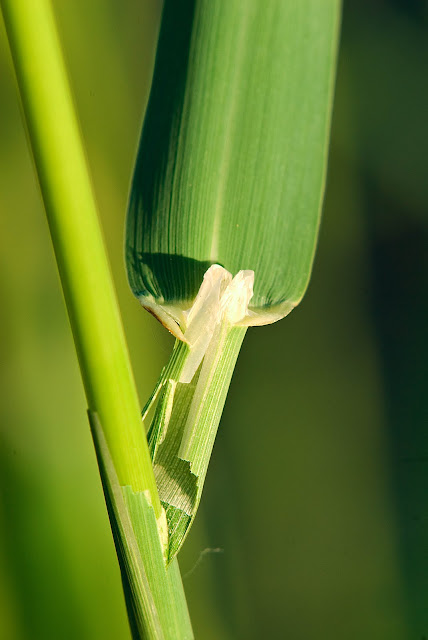 |
| Reed Canarygrass Phalaris arundinacea |
It grows so well in wet areas that it chokes out everything else. It's so difficult to control that it's not listed as a noxious weed in many states, a designation that would require landowners to eradicate it, because it's non-eradicable. I know of many small wetlands around northeast Indiana that are just Reed Canarygrass and almost nothing else.
On the other hand, there are several cultivars of this plant that are used as ornamentals in gardens. It's also a candidate for phytoremediation of contaminated industrial sites. It can be made into pellets for burning at biomass power stations.
Perhaps the most peculiar use is as a source of a psychedelic drug. Amazonian natives learned long ago how to make a brew called ayahuasca, which is used by shamans to assist in having spiritual revelations regarding their purpose on earth, the true nature of the universe, and how to be the best person they can be.
Ayahuasca is made from two plants. It starts with a the leaves of Banisteriopsis caapi which have a type of chemical known as MAOIs. You can look that up yourself if you're really interested in chemistry. This chemical allows another psychedelic compound; DMT, to be orally active, i.e. it can be ingested and work its charms. DMT is found in a variety of plants, the Amazonians typically use Psychotria viridis, but it has been found in Reed Canarygrass. Given the industrious manner of Americans, much effort has been put into methods for extracting DMT from Reed Canarygrass.
My firewall at work won't allow me to access those websites that describe how to get DMT from Reed Canarygrass, something about illegal drugs, so you'll have to figure that out on your own.
One of the advantages of working on this blog is that I am learning so much!
 |
| The sheath at the base of the leaf is an aid in identifying this plant |

No comments:
Post a Comment